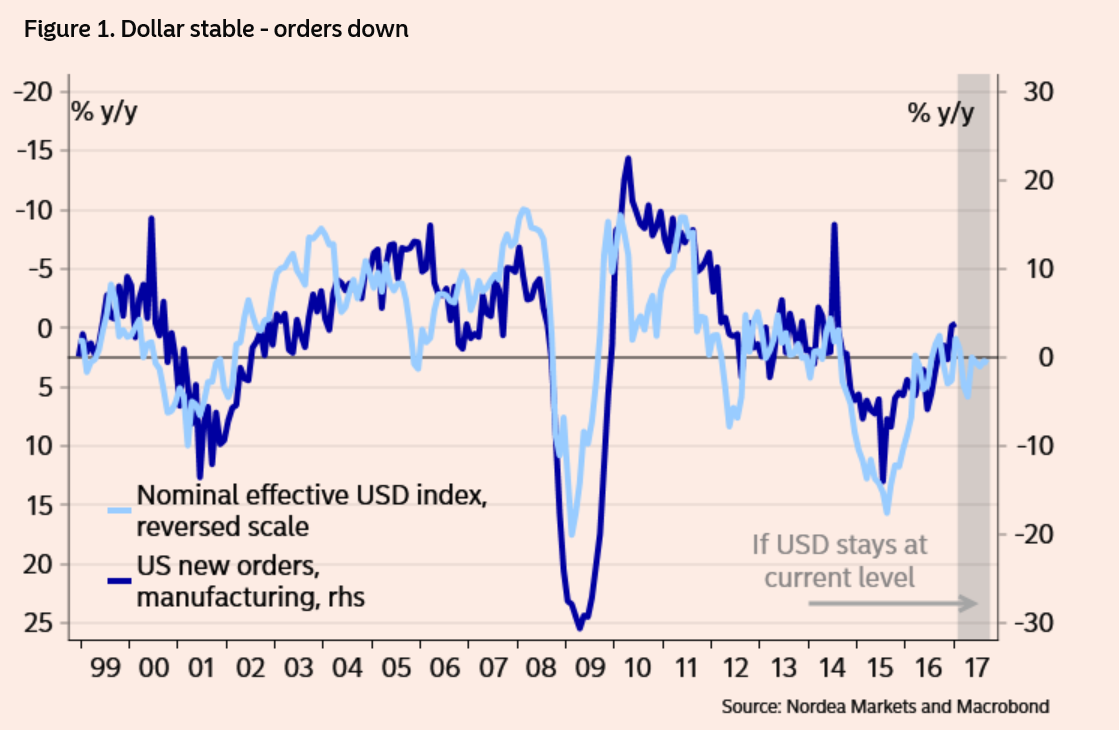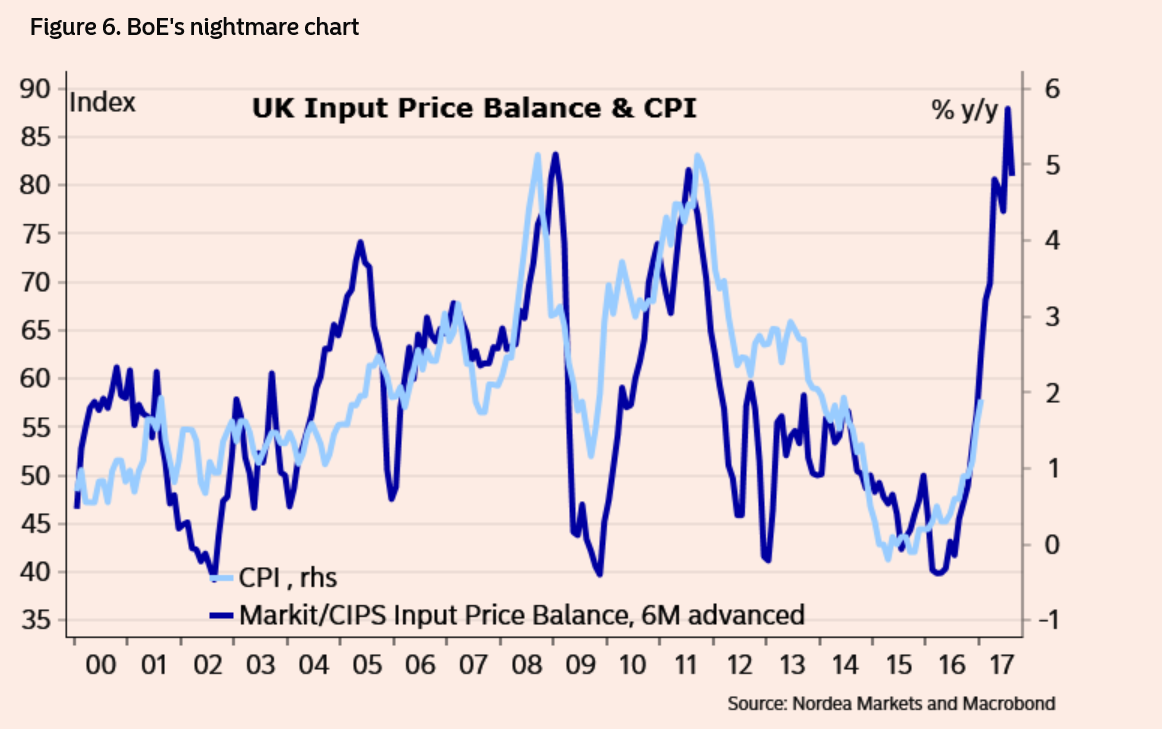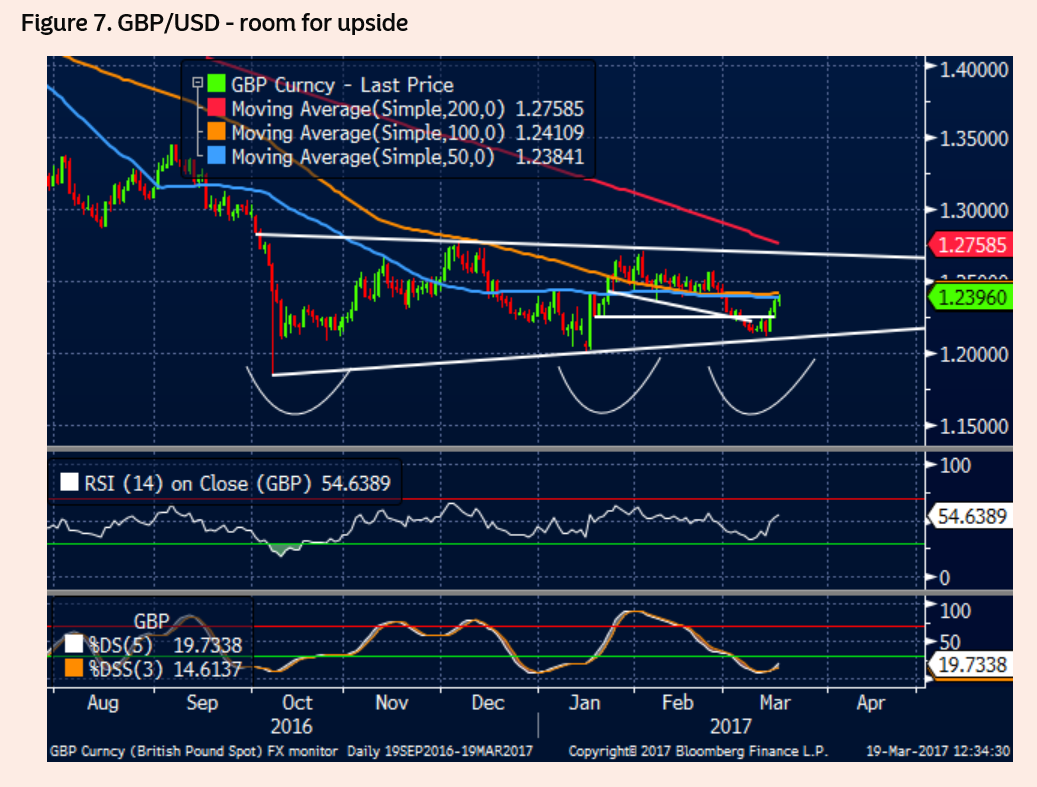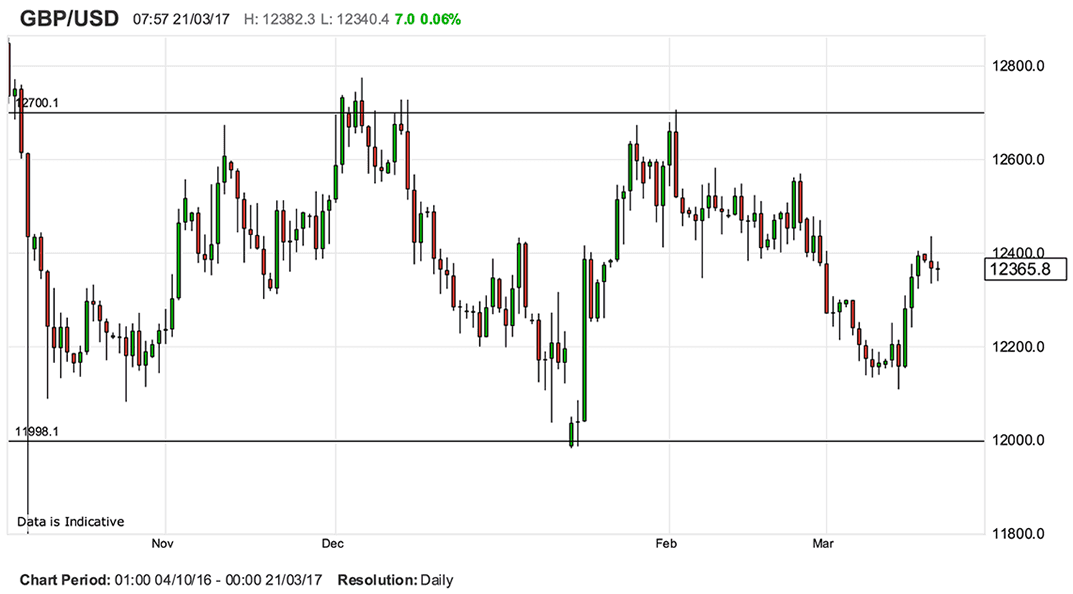Pound Forecast to Rise Back up to 1.27 Dollars

The Pound to Dollar exchange rate (GBP/USD) is likely to recover back towards the upper end of recent ranges argues a fresh analysis on the currency pair's outlook.
Analyst Aurelija Augulyte at Nordea Markets says she believes the Dollar is about to enter a period of underperformance that will allow the maligned Pound to push back up towards the 1.27 area.
Since December 2016 the exchange rate has traded within a broad range that has 1.20 at the bottom and 1.27 at the top and there is a sense that a big directional break out of either end of this range will require something special.
The Dollar itself appears unable to refind that strength we saw it enjoy following the election of Donald Trump to the White House, this has allowed Sterling to stabilise towards the centre of its range.
Whilst most analysts think that the fall in the Dollar is just a temporary set-back Augulyte believes weakness might be longer-lasting; a view that has important implications for the outlook of GBP/USD.
The analyst notes there is a close correlation between a strengthening Dollar and a negative impact on Manufacturing, with ‘New Orders’ dropping as the Dollar appreciates; at the current level New Orders will stagnate.
As such, the Dollar has reached a level where it is actually an encumbrance to the economy.
“Say, the USD stays at these levels – base effects are negative to industry at least until October. Also, should oil prices stay at these 'comfortable' levels for the rest of 2017, we will probably see industrial contraction in the US by New Year!” says the Nordea strategist.

This view is not a new one - we have reported today that analysts at DNB Markets in Norway have upgraded their foreign exchange projections with a view that the strengthing US Dollar could start limiting US economic activity.
This should in turn cap yet further USD gains.
US data has had a long run of positive data but now we have “passed the peak” according to Augulyte, who expects data to start to undershoot expectations.
“We have passed peak activity, and even the first US regional manufacturing survey data has ticked lower last week. Keep watching those as the indication for the next ISM. As a reminder, any miss in data is bad for the USD,” she said.

In relation to the Pound’s rally, whilst many analysts see the optimism expressed by the Bank of England (BOE) as unwarranted, Augulyte takes a contrarian stance and expects Sterling to continue appreciating.
Although she doesn’t play down Brexit risks she does see a chance that higher inflation data (February CPI out this week) could lead to a heightened chance of the BOE having to hike interest rates.
Normally this would be ok, but not when the reason for the inflation is the weak pound rather than intrinsic economic growth.
She says “consumption, the only weak spot in the economy.”
Inflation is the cause of falling consumption and it is set to worsen as the inflation rate is expected to rise further, as it catches up with the 20% increase in producer price inflation from the massive rise in the prices of imported sub-components used in UK manufacturing.

Nevertheless, rising inflation will prompt the BOE to raise interest rates, which strengthens Sterling.
“Inflation expectations have risen, and will act as the stop-loss to the , BoE’s easy monetary policy going forward." The GBP/USD has found
And this, in turn, will lead to a rise in GBP/USD, the chart of which is featured below and is showing a base forming.
"The GBP/USD has found base and should resume the rise to 1.27,” concludes Augulyte.

Brexit Gets Real
The UK government has announced on Monday March 20 that it will trigger Article 50 on 29 March.
This will start a two-year process for the UK to negotiate its future relationship with the EU.
European Council President Donald Tusk meanwhile announced that he will present the draft Brexit guidelines to the EU member states within 48 hours of the UK triggering Article 50.
However, a detailed stance will probably take longer to formulate and real negotiations may not start until June.
"Recent statements on both the UK and EU side suggest both camps are taking a tough line, which is logical at the start of any negotiation process," notes Nick Kounis at ABN Amro in Amsterdam.
Prime Minister May has said the UK will not be part of the single market or customs union as she seems to want to start from a blank page so she does not need to negotiate under the current rules.
At the same time the EU has said they do not want the UK to ‘cherry pick’ the benefits of memberships, while getting rid of the responsibilities.
In particular, the EU insists that full access to the EU market is only possible with full freedom of labour.
"Our base case is that some balance between free trade, free movement and payments into the EU budget will be eventually agreed, though the outcome is obviously highly uncertain," says Kounis.





